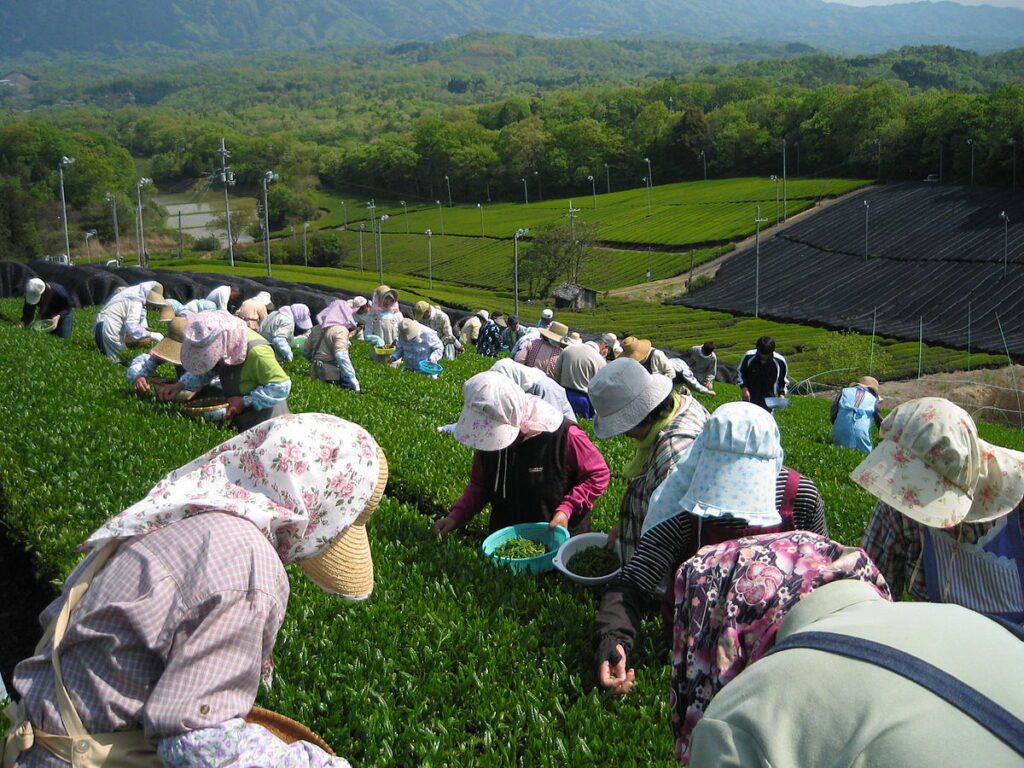Even expensive tea can become tasteless if it is stored incorrectly. For example, the leaves easily absorb extraneous odors and moisture. And at a very high temperature, they begin to give aromatic substances directly into the air — before brewing.
Therefore, for each variety it is important to know the nuances of storage in order to preserve the taste and beneficial properties of your favorite drink. The article will tell you where and how to store tea and why a refrigerator is not suitable for tea leaves.
What parameters and external factors affect the quality of tea during storage
The quality of tea is influenced by several parameters .
Humidity. Tea is recommended to be stored indoors with a humidity of 40-60%. At a humidity of more than 65%, undesirable oxidative reactions begin to occur in the leaves – tea deteriorates and molds faster.
Foreign smells. For storing tea is to allocate an insulated cabinet. And also think over separate shelves, where different varieties will be located.
These measures are needed because dry tea leaves easily absorb foreign odors — for example, citrus fruits, perfumes, coffee, spices and even other types of tea.
Oxygen and light. Tea is preferably stored in a dark place without direct sunlight. With prolonged contact of the leaves with oxygen, mostpolyphenols are destroyed, and tea loses its antioxidant properties. And under the action of light, enzymes are activated, which accelerate oxidative processes and destroy the pigments of the tea leaf. This changes the color and taste of the drink.
Temperature. It is optimal to store tea at 17–20 ° C. At temperatures above 20 ° C, the leaves begin to gradually open and give their aromatic substances into the air. Because of this, when preparing the taste of the drink will not be so rich.
Careful handling. A box or bag of tea should not be shaken much during transportation and operation, so as not to damage the leaves. Broken leaves interact more intensively with the external environment, give up and absorb moisture faster. They accelerate the fermentation processes. All these factors negatively affect the taste of tea after brewing.
Storage in large quantities. If possible, tea should be stored in large quantities in one container. This will reduce the amount of oxygen in the vessel and prevent extraneous odors from absorbing. For example, Chinese oolong Te Guan Yin is better and longer stored in packages of 5 kg than in bags of 100 g.
Storage capacity. It is best to store the leaves in porcelain containers with a tight-fitting lid. They keep the tea dry, do not let in light and protect against the ingress of foreign odors. In glass containers, tea can be stored in a dark place, for example, in a kitchen cabinet. You can also use special zipper bags, after releasing air from them.
In stores you can find special cans and cardboard tubes, which are covered with cling film or foil inside. Despite their aesthetic appearance, we do not recommend them for storing tea. Upon contact with metal, tea can oxidize. Also, such containers can give tea a foreign smell of metal or cardboard.
Shelf life. Different varieties of tea have a shelf life. Green is stored for up to 12-18 months; black – up to 18–20 months. Oolong and white tea are stored for up to 2 years. Aged varieties of white tea and pu-erh can lie up to 5–10 years. White teais well suited for aging, because in the production process there is no roasting stage. This means that the tea will be able to oxidize on its own over time. The leaves are pressed into balls or pancakes, like pu-erhs. Then, with prolonged aging, the fermentation process takes place and the taste changes every year.
However, according to experts, all varieties, except pu-erh, are still better to buy in the amount that you can drink in 2 months. During this time, with proper storage, the composition and taste of the drink will definitely not change. You should also pay attention to the time of harvest: it is better if the tea was harvested this year.
We reviewed the general recommendations for storing tea. But for each variety there are certain nuances that are also important to adhere to. Let’s look at them further.

How to store tea depending on the variety
Storage nuances depend on calcination and the degree of fermentation of tea.
Tea of weak calcination and fermentation. This group includes light oolongs, green and white teas. These varieties are very susceptible to external factors. Moisture is especially detrimental to them. Therefore, it is important to store them at a humidity not higher than 60% and protect them from temperature extremes.
At home, you should not keep such teas in paper bags: they do not tightly close and let in moisture. Hermetic porcelain jars are best suited. The optimum temperature is up to 20 °C.
In production and stores, large batches of this group of teas are best stored at 2–7 °C. And oolongs with sufficiently dense or compact twisting – for example, Alishan or Ti Guan Yin – are preferably kept in vacuum packaging to prevent contact with air.
This group is more resistant to environmental influences. They do not need to be placed in a refrigerator or vacuum packaging — quite durable, not necessarily airtight. For storing these varieties at home, the same conditions are suitable as for a group of teas of weak roasting and fermentation.
Post-fermented teas are pu-erhs.
Pu-erhs are divided into two types:
- Shengs – they are collected, immediately dried and pressed into pancakes;
- Shu undergo an artificial post-fermentation procedure and then they are compressed.
With each new year of storage inside the pancake, a process of natural fermentation gradually takes place, in other words, the oxidation of the tea leaf. The aroma becomes denser, heavier and richer over time.
For storing pu-erh in production, each individual pancake is wrapped in one or more layers of wrapping paper. Then they are collected in a seven-blin bowl and packed in dried palm leaves. Seven-liners are folded into cardboard boxes.
Shu pueri is best stored together with Shu, and Shenga with Sheng, so that different microflora and fermentation processes do not affect each other’s tastes. Young Shu or Shen pu-erh can be kept next to a suitable older pu-erh – this will accelerate the maturation of the first.
When storing at home, each pancake should be kept in its own box and stored for up to 3 years. It can be longer, but it is important to ensure that mold does not form on them. Although the taste of pu-erh may become better over time, it is important to avoid foreign odors, excessive moisture and its differences during storage. For example, a pu-erh pancake can be put in a bag with a ziplok, which will protect it from external influences.
Note that any kind of tea should not be left in the refrigerator if you plan to brew a drink daily.
Why tea is not recommended to be stored in the refrigerator
At low temperatures, the tea stays fresh longer. But the refrigerator is only suitable for industrial or store storage of oolongs and green tea. At home, you should not keep tea in it, because with regular use of the drink, the rule on temperature differences is violated.
If you constantly get tea from the refrigerator, then the level of moisture in the leaves rises, which causes condensation. Because of this, quality suffers and mold can form. Tea can be left in the refrigerator only if you do not plan to use it for 1-2 months.
Tea from the refrigerator before brewing should be left at room temperature for 12–24 hours to warm up the leaves.
The less stress a tea leaf experiences during storage, the longer it will remain usable.

Conclusion
To store tea at home, it is preferable to allocate a separate locker, or better – two. One for weakly fermented oolongs, green and white, the other for black, red, highly fermented oolongs. Shen and Shu pu-erh should be stored on separate shelves.
Provide tea with a comfortable temperature of up to 20 ° C and control the humidity of the air not higher than 60%.
Purchase sealed jars for storage so that the leaves are protected from light and oxygen.
Buy such an amount of tea to have time to drink in 1-2 months. During this time, with proper storage, the composition and taste of the drink will not change much. Pueras can be acquired in larger quantities. For this variety, a change in taste over time is normal.
Artisha offers you quality products from purely environmentally friendly raw materials





